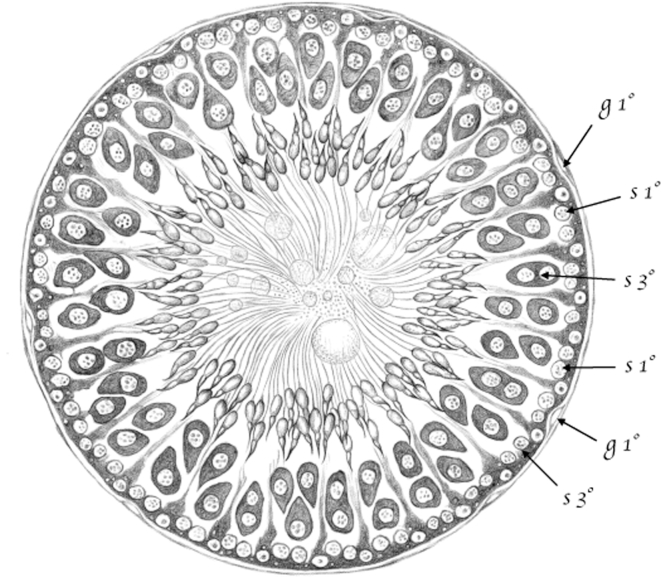Figure 1.
(Table III.) Cross-cut section of a seminiferous tubule in rats, in a point in which [spermatids] are in their second [(elongating)]developmental stage. 200/1. (Appears to be a stage XI–XIV tubule [Perey, Clermont, and Leblond Amer J Anat (1961)]; at these stages, the seminiferous epithelium would contain the following germ cells: rare type A spermatogonial stem cells, type A differentiating spermatogonia, leptotene (stage XI) and zygotene (stages XII–XIV) spermatocytes, pachytene (stages XI–XIII) and diplotene (XIV) spermatocytes, and condensing spermatids.) 1st g (g1°) – first stage [spermatogonia]; 1st s (s1°) – first stage [spermatocytes (leptotene & zygotene)]; 3rd s (s3°) – Third stage [spermatocytes (pachytene)].

